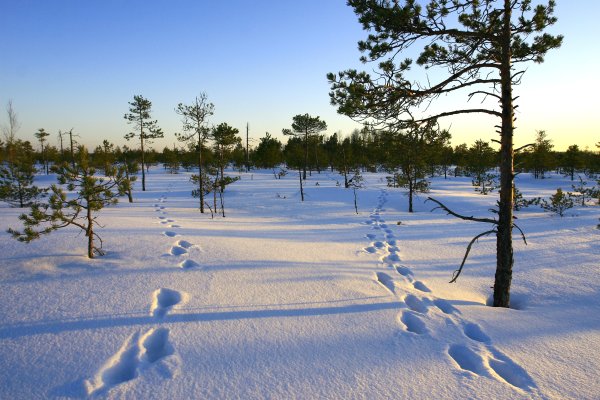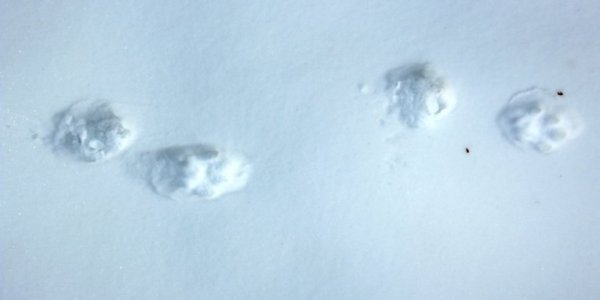Beneath the forest drifts
When the ground is covered with snow, it is the right time to go on a wild adventure through the white snowdrifts. It is a perfect time for studying the footprints left by different forest dwellers, also those who can normally not be seen in the daytime.
Pathfinders visiting the part of Latvia where there is no snow, hopefully know that the "footprints" are not just foot prints or traces left by animals. Traces can be different, for example, teeth. Beavers are those who leave the most expressive "teeth-prints". But they are not the only ones.
Animal footprints in the snow indicate that the wild boar mating period is about to end. One may come across wild boars - mainly in sounders (a wild sow with piglets). Most of the adult boars live again alone.
All animals - both those who are active in the daytime, as well as night animals, and those who have winter sleep, get ready for the cold season well in advance, they dress up in their light coloured winter coats that are warmer - with thicker and longer hair. Lynxes, foxes, white hares have more hair on their feet in winter. The winter suit of the majority of mammals (except ermine, weasel, white hare) does not become completely white, but only lighter. Mammals - beavers, muskrats, otters and mink are less affected by changing.
For a typical city dweller it might sound weird or unbelievable, but also in winter one can enjoy berry-picking. But you have to know the right places where to do it. Before the forest was covered with ice and snow, there were still cranberries growing in marshes. At the beginning of winter attention of a potential berry-picker might be drawn by the bright clusters of small fruit growing on the guelder-rose shrubs. Berry-picking, unlike mushroom-picking, is a well-suited activity also for the winter season.

















